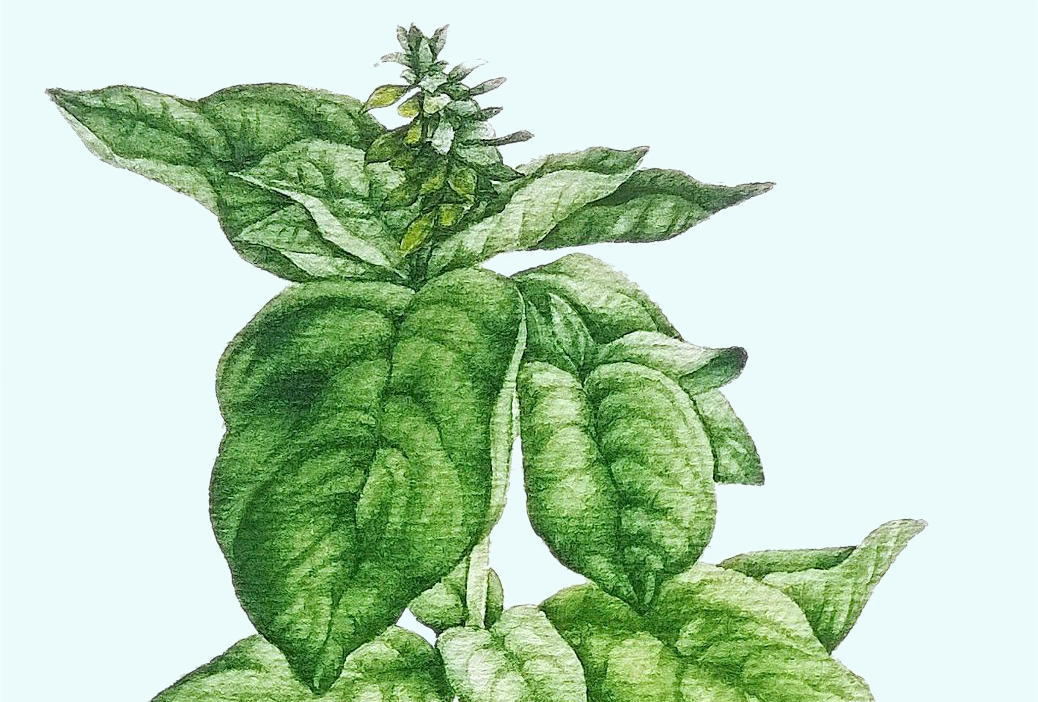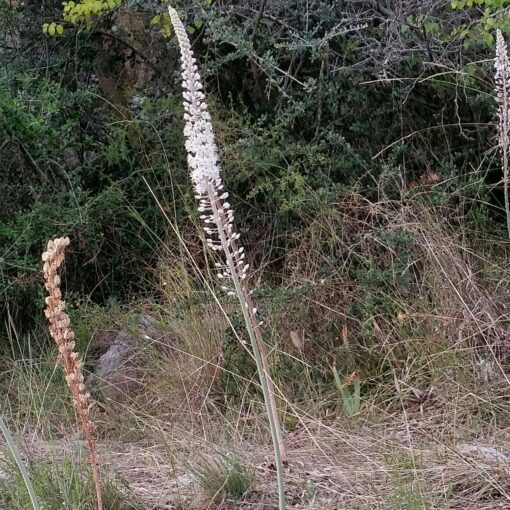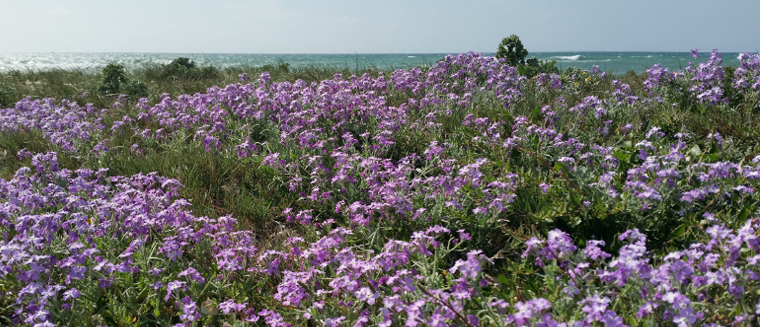
The abundant rain that has characterized this spring has made the spring vegetation luxuriant, showing phenomenal blooms for abundance and exuberance.
The impossibility of containing on a page all the species that bloom in April, will focus our attention on “more flowery” environments. We will follow the path of colors and perfumes imagining a walk from the back-dunes to the wooded plains, represented in Italy above all by pine trees planted in all the historical periods. As always, there will be a glimpse of the fields, whether they are cultivated or left to pasture.
In the forefront, on the dune, the meadows dyed rose from the colored Mediterranean Catchfly (Silene colorata) and the violet and intensely scented ones of the Stock (Matthiola fruticulosa) are interrupted by the yellow of the flowers of the Yellow Horned Poppy (Glaucium flavum). The still sandy areas further from the sea can host the delicate Yellow Sunrose (Halimium halimifolium) that can form large populations; on the rocky plains overlooking the coast, however, dominates the darker yellow of the Sea Daisy (Asteriscus maritimus) together with the white of the cosmopolitan Woolly Chamomile (Anthemis tomentosa). Very frequent in the back-dune areas, be they sandy or rocky, small populations of Barabary Nut Iris (Gynandriris sisyrinchium), violet blue flowers with a delicate but very resistant air.
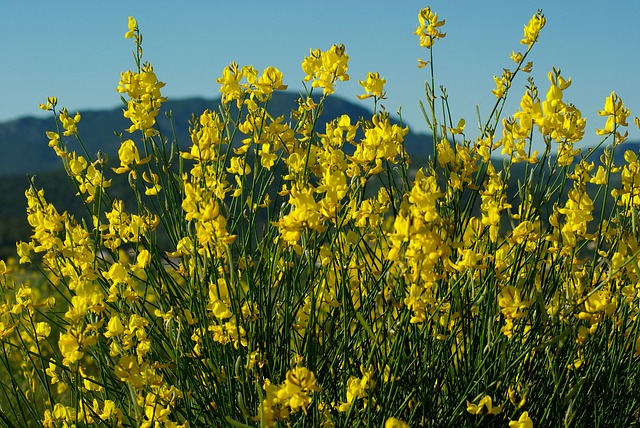
Continuing inwards, on the calcareous soils, the dazzling yellow of the fragrant Spanish broom (Spartium junceum) stands out, while the more acid ones are densely colonized by the Grey Leaved (Cistus monspeliensis), white of its small and numerous flowers. This low bush can resist in particularly hot and burnt places thanks to the narrow leaves filled with essential oils that defend it from dehydration.
Humid pools are formed behind dunal cords, which can become more or less brackish lakes. The rushes also connote the smallest outcrop of water, no matter if sweet or brackish. In April the Spiny Rush (Juncus acutus) blooms with noticeable flowers placed on jets that blend with long, sharp leaves. The queens of the small retrodunal brackish marshes are undoubtedly the tamarisk; the most common, the French tamarisk (Tamarix gallica), in this period covers the delicate and flexible branches of tiny white or pink flowers that the lightest breeze moves with lightness. Many cultivars of this species are used for ornamental purposes. If the swamp is more extensive and is now separated from the coast, on the edges of fresh water, we can admire the flowering of the Manna Ash (Fraxinus ornus), pleasantly perfumed; the “panicles” of white flowers, which in this species appear together with the leaves, recall small fireworks.
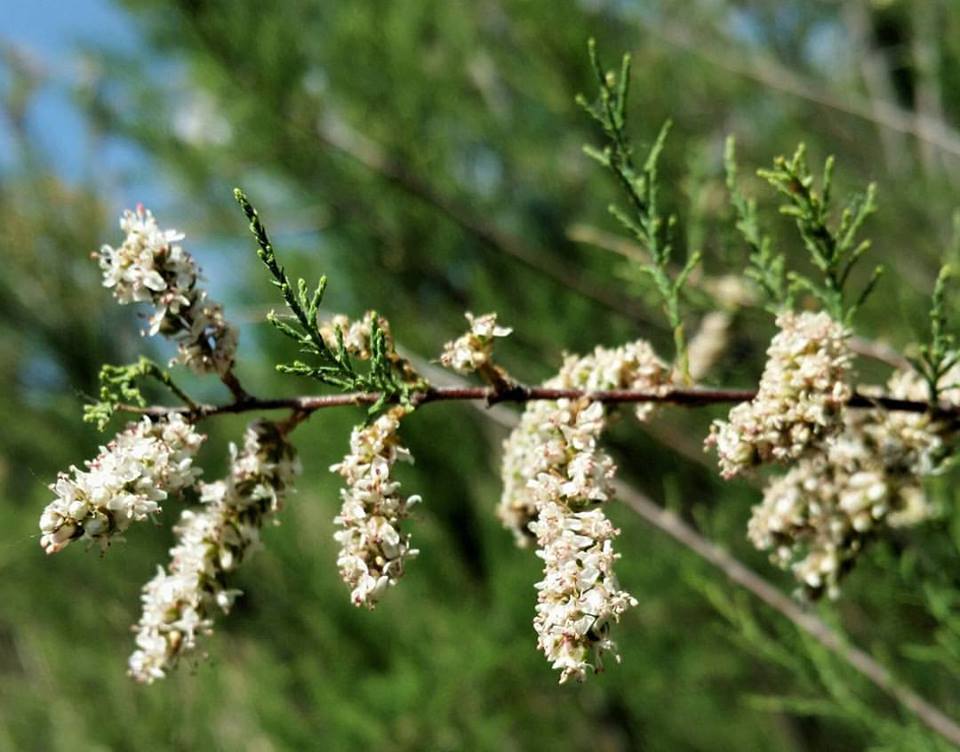
Leaving the dunes behind us, in the scrubland that precedes the pine forests, lives the Hairy Rockrose (Cistus incanus) with its large pink-red corollas that look like crumpled tissue paper and, a little more sheltered, the Cistus salviifolius with its white flowers with a golden heart. This is the environment of the Kermes Oak (Quercus coccifera) with inconspicuous inflorescences that will give acorns from the thorny dome.
Even the pinewoods are in full bloom: the smallest breath of wind moves the male cones and disperses the yellow pollens, making the air bright and fairytale. In the areas immediately behind the dunes we recognize the Maritime Pine (Pinus pinaster), while in the innermost areas we find extensive formations with Aleppo pine (Pinus halepensis) and Stone Pine (Pinus pinea), the latter much appreciated for the pine nuts that will give away in the fall. Where the pine needles are less dense the large yellowish bract of the Large Cuckoo Pint (Arum italicum) encloses the floreal tract of the spadix.
In the few areas where pine forests have not been planted, if the soil is very arid, we can find the Lotus Jujube (Ziziphus lotus) much loved by frugivorous birds, some insectivores, otherwise the bush is dense with shrubs like Terebinth (Pistacia terebinthus) from the godic brownish flowers, arranged in long panicles. The strong insolation does not discourage the yellow flowering of Hairybroom (Cytisus villosus), while the Sessile-leafed Broom (Cytisus sessilifolius) prefers to flourish in woods and deciduous woodlands. Not so for the Minorca Honeysuckle (Lonicera implexa) that with its rosy flowers smells the underwood of Holm Oak (Quercus ilex), also flowered.

Going towards the fields, along the edges of the paths, where there is a bit of shelter and damp leaves a little ‘to fix the long theories of Larus (Arisarum vulgare) that accompanies the different species of Grass Pea, Blue sweet pea (Lathyrus sp. ) that often also invade the uneducated. The open and flat fields, even if apparently uniform for the thermoclimatic conditions, contain, in reality, many microhabitats that select the different species that settle there. So in the pastures where the soil is more calcareous the Giant Fennel will be abundant (Ferula communis), while it will be very easy to find the Narrowleaf Lupin (Lupinus angustifolius) on basically acid soils: the High Mallow (Malva sylvestris), also widely used in traditional medicine, it is at home in the meadows and uncultivated places of the plains, the different species of Tree Mallows (Lavatera sp.) instead, it is easier to find them on the ruins or on the edges of the roads. Some species such as Red Horned Poppy (Glaucium corniculatum) and Quaking Grass (Briza maxima) prefer the uncultivated fields, while the Pyramidal Star of Bethlehem (Ornithogalum narborense) invades vineyards and orchards, the Field Poppy (Papaver rhoeas), for par condicio, is omnipresent! Difficult, instead is to define the habitat of the Italian Sainfoin (Hedysarum coronarium) as it is cultivated as a forage and is often found wild on the edges of roads and uncultivated areas.
To stimulate the observer’s spirit of observation, speaking of rural environments, I do not want to forget the Blue Pimpernel (Anagallis foemina). It ‘a flower that is found in all fields and it is really very beautiful but … it is also very small, and you have to sharpen the sight to deserve to see it!
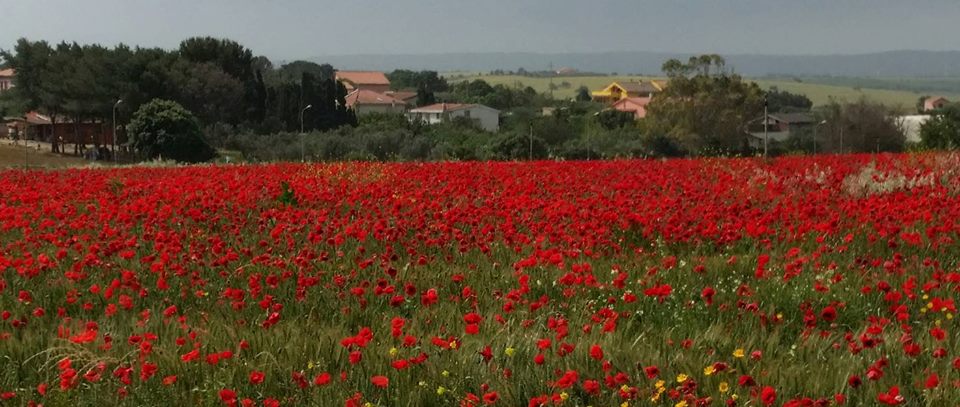
We close this long succession of joys for the eyes with the Orchids. Flowers of great rusticity and beauty, in April they open their corollas the Tongue Orchid (Serapias lingua), the Long Lipped (Serapias vomeracea), the Late Spider Orchid (Ophrys fuciflora) and, dulcis in fundo, the Lady Orchid (Orchis purpurea).
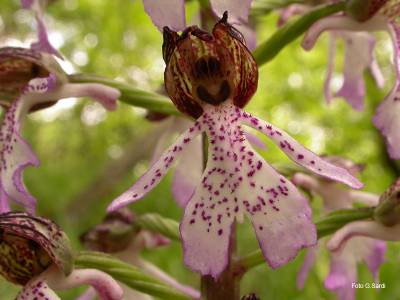
Credits:
Author: Anna Lacci is a scientific popularizer and expert in environmental education and sustainability and in territory teaching. She is the author of documentaries and naturalistic books, notebooks and interdisciplinary teaching aids and multimedia information materials.
Translation by Maria Antonietta Sessa

